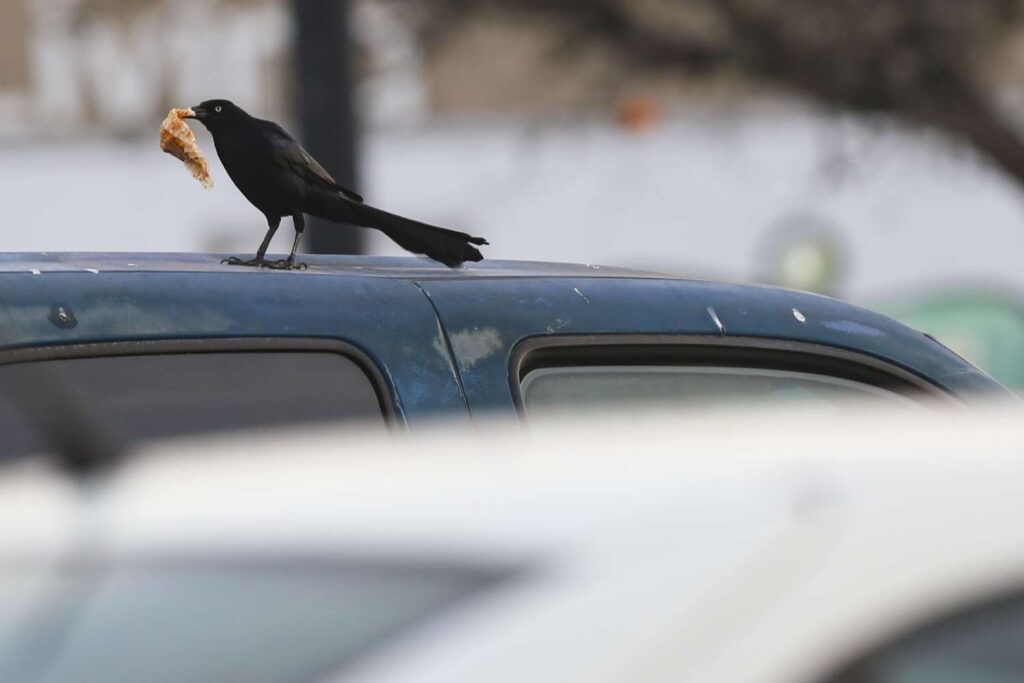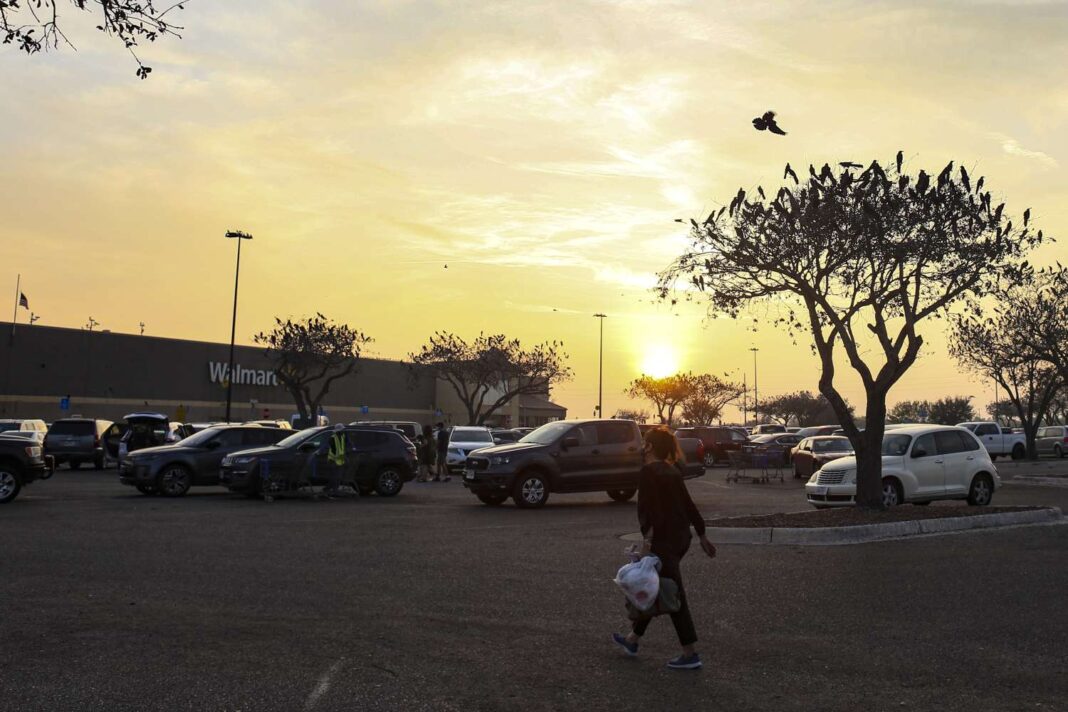HARLINGEN — Fed up with raucous flocks of noisome, great-tailed grackles swaggering across parking lots like a million-bird band of invading Vikings?
Blame the Aztecs.
The great-tailed grackle originally was found only in the jungle lowlands of Central America, but the prized tail feathers of the bird caught the fancy of Aztec emperor Ahuitzotl, who imported several of the birds to his capital, Tenochtitlan, in the late 15th century.
And once there, the birds found much to agree with when it came to urban living.
Between 1880 and 2000, the great-tailed’s range grew by an astonishing 5,530 percent, not coincidentally paralleling increasing human urbanization and agriculture in the United States. Of all North America’s bird species, the great-tailed is the one expanding its range the fastest.
The great-tailed grackle, quiscalus mexicanus, is one of three grackle species in the United States, which includes the common grackle and the boat-tailed grackle.
The common is found east of the Rockies across most of North America, while the boat-tailed is a bird that hugs the coastline, ranging from east Texas and through Florida and north to the Carolinas.
Today the great-tailed can be found as far north as Iowa and Oregon, and its ascent could be part of the reason for the common grackle’s decline.
“They have definitely increased in the U.S., and are definitely on the rise in Texas, so it seems likely that they are increasing in the Valley as well,” said John Brush, an urban ecologist with the Center for Urban Ecology at Quinta Mazatlan World Birding Center in McAllen.
“They’re what we call a synthropic species, they associate with human beings in terms of agriculture, they forage a lot in agricultural settings, so sorghum, corn, citrus orchards, they all utilize those as foraging grounds … It definitely seems like it’s related to human changes to the landscape with urbanization and agricultural expansion.”
City lights
The great-tailed grackle is a gregarious bird which can form flocks of up to a half-million, and they seem to take a particular fancy to well-lit parking lots, maybe to provide protection against night-time predators like owls.
Anybody arriving at a grocery store around dawn can attest to thinking they have a role in some Hitchcockian nightmare, finding themselves walking through a squawking black swarm, balancing on rails, parked cars and shopping carts.
And this tendency to overnight in highly traveled human areas is where the trouble starts. The birds’ droppings can carry the salmonella bacteria, and often roundworms, both of which are probably more a threat to pets than humans.
You can see the response outside Valley businesses, where trees are often severely pruned back, in a desperate attempt to deter the birds from roosting and fouling parking lots.
“One hypothesis is of course safety in numbers, we think of the shoal of fish, the more individuals that are in a big flock like this, the less likely each individual is to be depredated by a hawk or a falcon or something else along those lines,” Brush said. “And then also you get the added benefit of, if you’re a hawk that’s diving into this crowd, it can be just overwhelming and confusing to choose which one you’re going for.”
Brush said a second hypothesis is the birds congregate under urban lights to give them an advantage over nocturnal predators.
“So if you’re an owl or another nocturnal bird of prey or nocturnal raptor, you may be less likely to hang out near lights,” he said. “So if you’re a grackle and you’re gathering up in these huge groups, and you choose a lighted area, it might also decrease the risk of predation.”
Another possibility, Brush said, is flocking up at night might provide some feeding advantage when it comes time to break up at dawn and head out of town to eat.
“A lot of times if you watch these grackle roosts in the early morning, they’ll take off in groups of a hundred birds or less to go out into their foraging areas, usually slightly out of town,” he said. “There’s some thought that by congregating these birds are actually able to use each other to find food.
“They may follow a group of grackles out to a different foraging area, for instance,” he added. “It’s almost like they’re communicating and learning from each other about where the food is, and that’s not the best way to put it, but it’s the most succinct way.”

Bird wars
There have been a lot of attempts to find some way to encourage great-tailed grackles to move somewhere else, and almost all have ended in failure, some of those expensive.
“It’s very hit-or-miss. There’s no sure technique, but some of the things that people have tried are noise cannons, so whenever grackles are coming in to roost, you get these devices that make this very loud BOOM! sound and you just intermittently sound those off during the grackles’ roosting time and eventually it dissuades them from wanting to be in the area.
“The key with the grackle, or almost any other bird, is you have to fight against habituation,” he added. “So basically they’ll get used to anything if it’s at a regular interval and it doesn’t hurt them. If you put out, for instance, a fake falcon or something, the birds might be scared for a little while by it, but they’ll quickly realize it’s not going to do anything, so they’ll just ignore it.”
Some cities and businesses with bird problems have hired falconers to come in and have their hawks and falcons chase and eat some of them, but Brush says he hasn’t heard of that with grackles.
In San Antonio, the city has had some success zapping the grackle roosts at night with lasers, although that just moves them down the road to become somebody else’s problem.
“You see some wild things sometimes,” Brush said. “I remember seeing, and I can’t remember where it was, someone put up nets over their trees to dissuade grackles from roosting in it. I’m sure that worked for that one tree that you put the nets on, but it doesn’t seem very economically feasible.”
In the long run, as long as humans continue to manufacture urban habitats the great-tailed grackle has learned to exploit, the birds will remain a problem.
“We’re creating these habitats, and they’re just simply coming in and occupying them,” he said.





